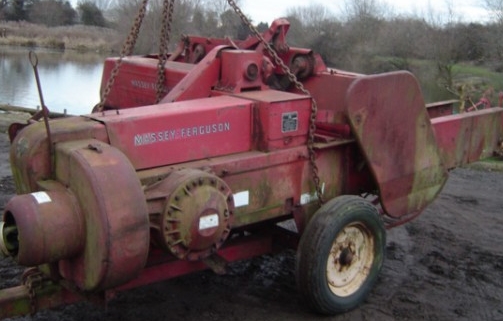Massey Ferguson MF20 baler factory workshop and repair manual download

Massey Ferguson MF20 baler PTO Tractor attachment factory workshop and repair manual
on PDF can be viewed using free PDF reader like adobe , or foxit or nitro .
File size 6 Mb PDF document searchable with bookmarks.
The PDF manual covers
Summary
Safety precautions
Specifications
attachment to the tractor
Operation
Adjustment
Twine knotter adjustment
Safety Devices
Maintenance
Accessories
Operator part list
About the Massey Ferguson MF20 Baler
P.T.O. driven model l5 and 20 balers may be attached to all types of tractor, the horse—power of which is 30 or above. However, in very hilly or soft ground conditions, or where heavy sledges or wagons are used, a 35 - SO horsepower tractor is to be preferred. The model l5 and 20 balers are available with a suitable drawbar and suitable P.T.O. drive shaft arrangements to enable them to be ?tted to practically all models of tractor on the market. Whilst these balers can be used quite satisfactorily on tractors fitted with fixed lateral drawbars a swinging type drawbar is to be preferred as it generally allows better cornering.v
The baler hitch plate can be adjusted vertically to allow the baler drawbars to be approximately level when fitted to the tractor. The baler drawbar can be quickly changed from the working to the transport position by the release of a spring loaded plurger. P.T.O. shafts for I5 and 20 Balers are supplied in three optionalb
lengths to suit tractors. The crop must be so arranged that windrows are regular and have
the same section to assure even feeding and smooth running of the
baler.
It is recommended to make small windrows and to drive
quickly.
Check that windrow height is lower than crop guide bar height,
thus avoiding the possibility oi baler over loading by picking up
too large windrows.
Windrowing should be operated in the same direction as mowing.
This permits the placing of leaves in the middle of the windrow and
assures even drying and reduces colour loss to a minimum.
it is important to turn over hay completely to avoid irregular drying.

 0 Items (Empty)
0 Items (Empty)
